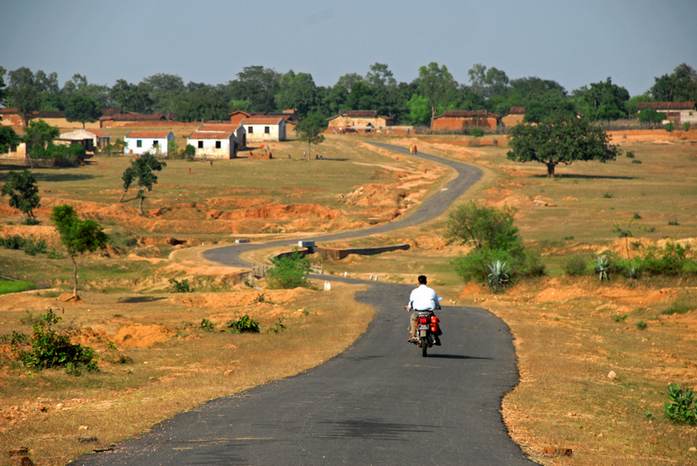Introduction
The disruption in human migration trends toward cities, caused by the COVID-19 pandemic, is not a problem, but rather—an opportunity to fundamentally transform rural life. Historically speaking, reverse migration has been triggered by various events—such as wars, terrorism, environmental crises, and pandemics. Placed in a similar context, the present COVID-19 pandemic, and the resultant reverse migration to villages is a once-in-a-lifetime opportunity to re-organise rural life in India.
Build Infrastructure
Earlier this year, India declared its commitment to spend about USD 1.4 trillion on infrastructural development, over the next five years. Given that around two-thirds of our citizens live in villages, boosting infrastructural spending in rural India ought to be a top priority. Once the threat of the pandemic subsides, and life returns to the ‘new normal’, we must invest massively in building infrastructure for housing, agriculture, education, healthcare, transport, and industry. Building road infrastructure is particularly important, so as to ensure that rural India is well connected. The rural demand for workers, coupled with the inevitable uncertainty around city life, will incentivise many to join the workforce in villages. This will also give a much needed boost to the real estate sector. We need to leverage the present opportunity, and create infrastructure which can create growth, and employment opportunities on a sustained basis.
Modernise Agriculture
Pandemic-induced lockdowns have sufficiently driven home the point, that there is nothing more ‘essential’ than food. This is not purely from a human sustenance point of view; for food is also essential as a critical component of India’s yet-to-be fully written growth story. Notwithstanding the fact that agriculture makes up for around 44 percent of our total employment, it constitutes only 14% of Gross Domestic Product (GDP), and mere 16% of Gross Value Added (GVA). Enhancing agricultural productivity, therefore, has to be the focus of every intervention. Farm mechanisation, crop diversification, crop protection, and fixing the supply chain management will inevitably lead to better results. There will be other benefits too. Crop diversification, and farm mechanisation will, for instance, reduce pollution levels in North India. Monopoly is the antithesis to growth, and we need to fix our supply chain management, by amending Agricultural Produce Market Committee (APMC) Acts. We also need massive investment by the market—in ‘food parks’, where micro agri-based industries can process, sell, and market our produce—first to India, and then to the rest of the world.
Identify Products & Incentivise Production
Agriculture alone will not create sustained high levels of growth. Now, more than ever before—we need to leverage the employability potential of the rural masses, and arrest their migration to overburdened cities. Borrowed from Japan,‘One District- One Product’ is a revolutionary idea, and it gives us the opportunity to chase the dream of making India a manufacturing hub. The belief that every district of India has something ingenious, indigenous, and innovative to offer to the rest of the world is well-founded. After identifying products, we need to conduct rigorous market analysis at the back-end, and incentivise production with a targeted focus to supply the product to the relevant markets. There should be a ‘one-stop’ district-level mechanism to help every small entrepreneur, in each district. From finance to marketing—everything has to be a well-coordinated exercise. According to the World Bank’s Data on Entrepreneurship, India ranks third in the number of new firms created. As per the Economic Survey, the growth rate of ‘new firms’ from 2014 to 2018 has been 12.2 per cent, as against a cumulative annual growth rate of 3.8 percent from 2006-2014. India is on the right track, but needs to do a lot more.
Attract Investment
In the post-COVID-19 global scenario, the world is expected to exercise restrain in its commercial relations with China. In a world where there is increasing suspicion around China, India has the opportunity to emerge as a ready alternative. This will not be easy; for there will be competition from other markets. India, therefore, has to show its intent—loud, and clear. This can be done by liberalising laws relating to acquisition, labour, licensing, manufacture, supply, and sale at the state level, by considering the requirements, and socio-political environment of each State. Another move which can generate some confidence is guaranteeing predictability in the regulatory framework. In order to achieve this, all political parties of the country need to come together, and resolve that nobody will back-track from the signed word, or cancel investment decisions taken by their predecessors. Legislative interventions which can guarantee this predictability, need to be explored. Courts too need to be more cognisant of the economic consequences of their decision-making. Without fundamentally altering the regulatory framework, India cannot attract optimum levels of investment.
Digitise Governance
In rural India, the need for governance aid in day-to-day functioning is a lot more than what we notice in urban areas. Forcing people to visit administrative headquarters in districts, and far-off capital cities, makes little sense, in as much as it negatively impacts productivity, and efficiency. There is no need as to why rural India should be deprived of the benefits of digitisation.
The COVID-19 pandemic has demonstrated that technology is not merely an enabler—but also a necessity, in dealing with the challenges of the twenty-first century. Panchayats need to be identified as facilitators in the rural governance model, and the need to visit physical offices needs to be eliminated.
Conclusion
The pandemic has, therefore, highlighted the importance of focusing on the needs, demands, and aspirations of rural India. It makes political, and fiscal prudence to invest in the future of Bharat. The reforms, though—will require immense political capital, and courage from Central, and State Governments. But what is necessary—ought to be done.
(The Author is an Advocate, and has an active practice of law, before various Courts, and Tribunals in Delhi. He can be reached at [email protected])
(The views expressed are the author's own and do not necessarily reflect the position of the organisation)

